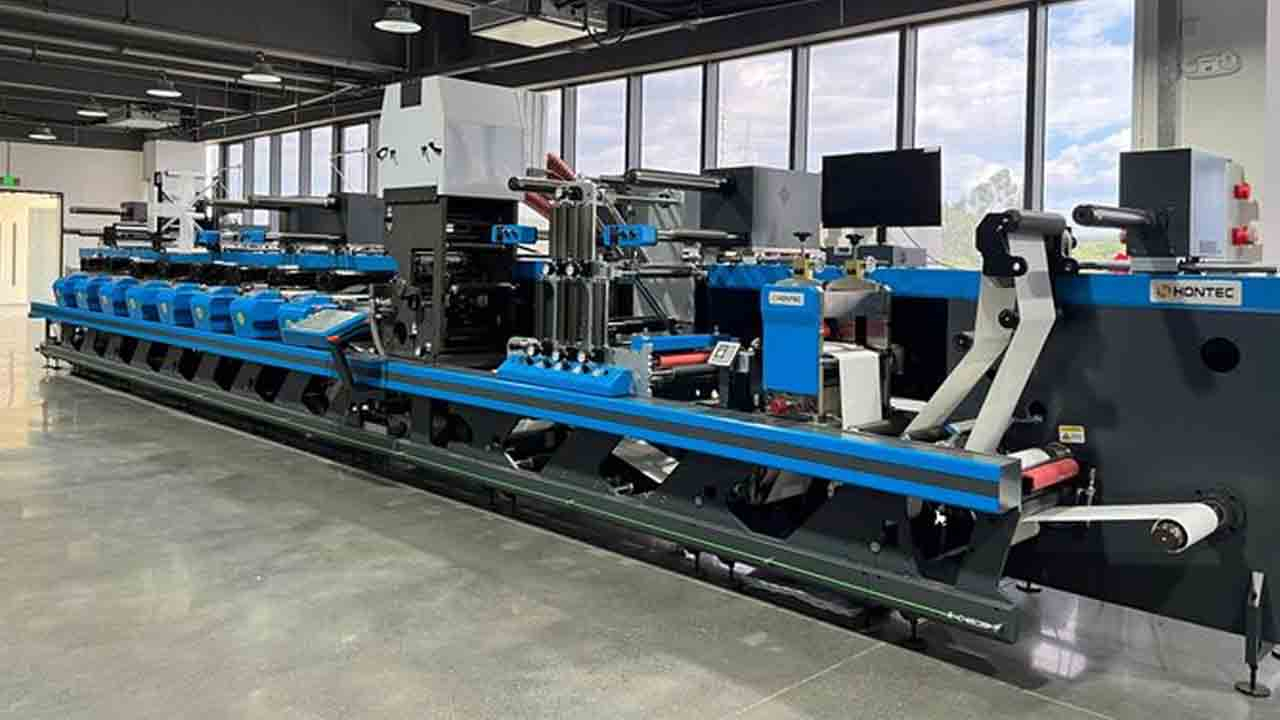Gallus launches MatteJet for premium products
Gallus MatteJet technology is now commercially available and opens up new markets for UV inkjet in the premium wine and spirits sector.

Gallus has announced the commercial launch of its MatteJet
technology, which allows a UV inkjet press to print matte by altering the surface texture of the printed dot.
This development is expected to open up new markets for UV inkjet in the premium food and drinks segment, and particularly for short-run premium wine and spirits, where a sophisticated matte finish is traditionally expected.
Available as an option for the Gallus One digital press, MatteJet involves a three-stage process developed by Gallus
and Heidelberg in partnership with GEW.
Inks are first pinned using LED lamps to stop the dots spreading on structured papers. In the second stage, a proprietary GEW light source modifies the surface texture of the printed dot so it scatters light rather than reflects it back. The third stage is overall arc-UV curing of the shaped dot.
The LED pinning is a critical step. Offset is traditionally used for structured label materials because it uses pressure to ‘iron’
inks into substrate. The Gallus MatteJet technology relies on pinning to hold the inkjet dot and stop it spreading. MatteJet
does not impact the tactile feel of the substrate - and indeed creates its own unique haptic effect.
MatteJet can be turned on and off at the touch of a button, allowing users to instantly switch between matte and gloss. Previously, this workflow for UV inkjet required the addition of integrated flexo varnish units or off-line varnishing, both involving additional plate and makeready costs.
The Gallus One with MatteJet engaged currently operates at speeds up to 54m/min.
Gallus Experience Center project
The original idea for what eventually became MatteJet came from a challenge identified by Gallus CEO Dario Urbinati.
‘We knew the inherent glossiness of UV inkjet inks needed a solution to open up more premium applications like wine labels, but didn’t want to go back to the old solutions involving varnish plates, which means more downtime, manual labor, and so increased TCO. When we presented the idea to GEW, they were immediately interested to work with us in finding a solution – and through our close partnership, our team worked
alongside theirs to transform the idea into a working solution.’
Urbinati explains that UV inkjet produces an inherently glossy dot because it is shaped like a perfectly smooth dome which
reflects light back to the viewer from all angles. By changing the surface texture of the dot using the specific light source in the MatteJet unit, light is scattered, which gives a matte finish similar to using a matte varnish or overlaminate.
The innovation was developed using Heidelberg’s UV inkjet inks as part of an intensive development process – with these proving to be ideally compatible with MatteJet for optimal performance and print quality.
The MatteJet solution was brought together at the Gallus Experience Center in St Gallen, where GEW is a key technology partner. The Center was built specifically for
collaborative cross-industry projects like this one.
“In the second stage, a proprietary GEW light source modifies the surface texture of the printed dot, so it scatters light rather than reflects it back”
During Gallus’ Wine Label Days event, an impressive demonstration was carried out at the Experience Center. A MatteJetequipped Gallus One matched a high-end spirits label printed years before on a Gallus RCS430, on a job which included hot foil stamping and embossing. The new MatteJet label was printed on Fedrigoni Waterproof White FSC material, while the original was produced on a similarly structured paper, allowing for a direct visual comparison.
The MatteJet module was integrated into a Gallus One hybrid press with downstream flexo and screen-printing units, Pantec
Rhino for hot foil stamping, and a die-cutting module.
Gallus calls this hybrid approach ‘System To Compose’. It allows users to match the 340mm or 430mm-wide Gallus One with any module from the Gallus Labelmaster press platform.
Urbinati sees the Gallus One with integrated MatteJet technology as a replacement, not for high-end presses like the Gallus RCS, but for the highly successful Gallus TCS250 intermittent offset press. Now discontinued by Gallus, this press was extremely popular in the sectors now being targeted by the Gallus MatteJet system – short-run premium food, wine, spirits, toiletries and cosmetics.
Stay up to date
Subscribe to the free Label News newsletter and receive the latest content every week. We'll never share your email address.


